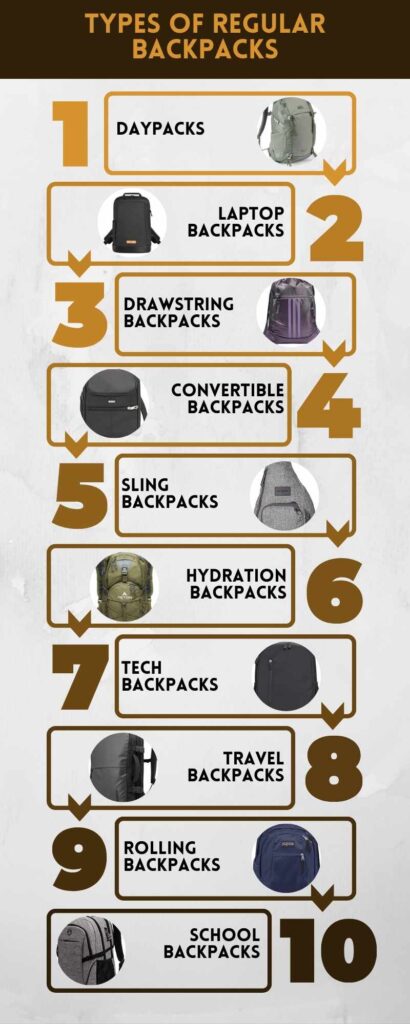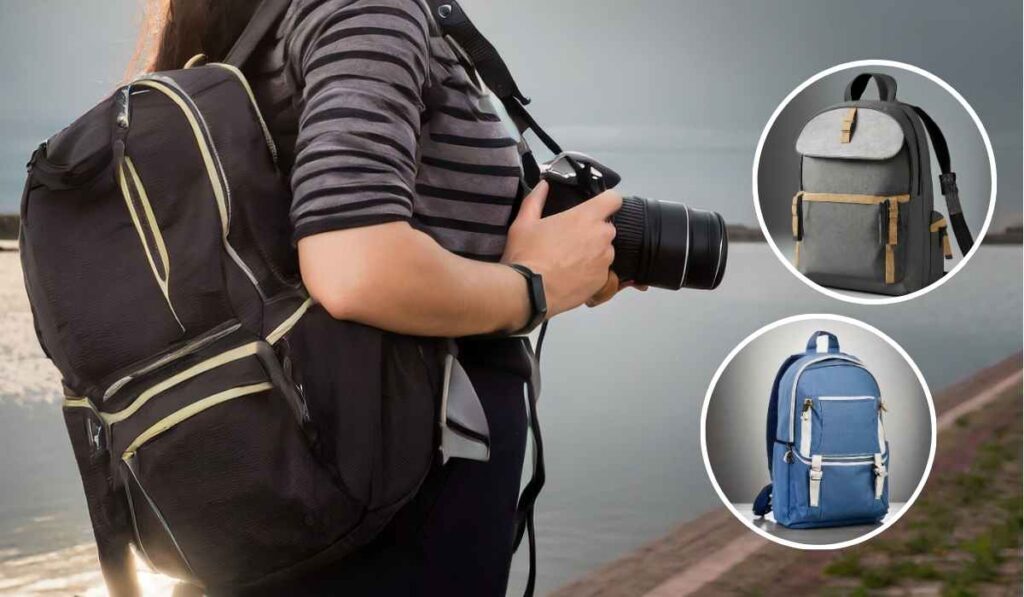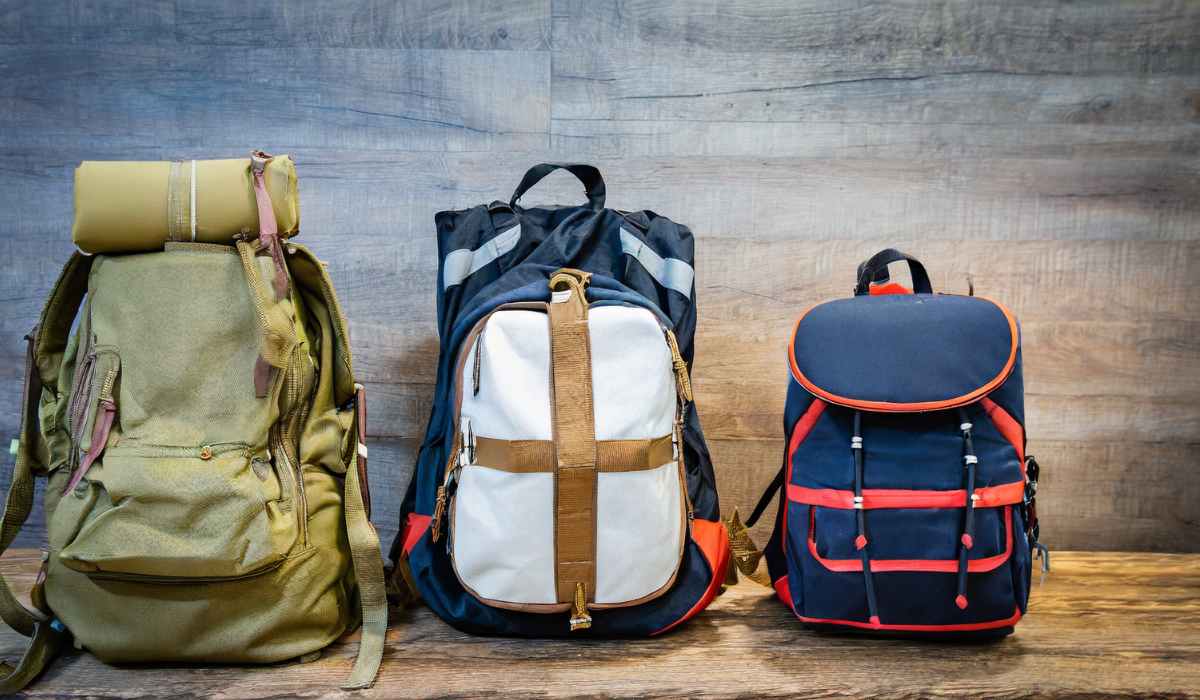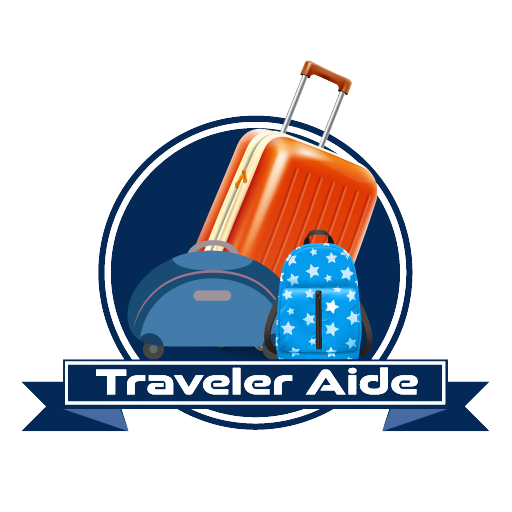Backpacks are our reliable friends because they carry our most essential things with us wherever life takes us. Finding the right one is challenging because there are many sizes and types. Do not be afraid, fellow explorers, while choosing a regular size backpack! This guide aims to help you understand bag sizes and find the right one for your needs.
Knowing the sizes of backpacks is essential whether you’re a student juggling books, a tourist exploring new places, or a parent making sure your child is comfortable.
This guide I’ll explore:
- Types of regular backpacks: I’ll talk about the different types, from simple daypacks to climbing backpacks, and the different amounts of space they can hold.
- Detailed size charts for adults and children: I’ll give you a complete chart with size suggestions based on your height and what you plan to use it for.
- Essential factors to consider: I’ll help you understand important things like body length, purpose, and comfort of carrying so that you can pick a bag that fits you perfectly.
- Estimating backpack capacity: Discover valuable tips and tricks to determine a bag’s size without a measuring tape.
- Choosing the right size for your needs: I’ll ask several questions to help you find the right backpack size, ensuring it’s manageable.
Get ready to discover a lot about backpacks on this trip! I’ll determine how to choose the right size backpack for your trips in 2024.
What Size Is a Regular Backpack?
When talking about bags, the word “regular” can be confusing. What fits and feels right for one person might be too big or too small for someone else. But knowing what types of backpacks are shared can be an excellent place to start.
In terms of space, an everyday bag for people is usually between 20 and 25 liters. In inches, this means that the size is about 18 to 20 inches tall. Today, you can use this size to carry school or work tools and papers or pack the basics for day trips and adventures.
Keep in mind that this is just a general rule. When choosing the best fit, your height, body length, and what you plan to use it for should be critical. The detailed size charts in the “Backpack Size Guide 2024” part can help you make a more accurate decision. By knowing your specific needs and what size is best for you, you can be sure that the backpack you choose is perfect for your trip.
Types of Regular Backpacks

1. Daypacks
These are the most popular types of (hike with) regular backpacks. They usually hold 18 to 25 liters. You can use them daily to carry school or work tools and papers or pack the basics for day trips and other trips.
2. Laptop Backpacks
With padded pockets and straps for extra comfort and safety, these bags are made to carry computers safely. They usually have different spaces for books, papers, and other items, generally between 20 and 30 liters.
3. Drawstring Backpacks
These light, multi-use bags bring small things like gym clothes, lunch, or water bottles. They are usually between 5 and 10 liters, smaller than daypacks.
4. Convertible Backpacks
Your creative bags can change from a backpack to a tote or shoulder bag, giving you more ways to carry your things. They are great for tourists who want to be able to do many different things.
5. Sling Backpacks
With their single-shoulder design, these bags are great for keeping your hands free and making it easy to get to your items. Most of the time, they are smaller than regular bags, holding only 5 to 15 liters.
6. Hydration Backpacks
These bags have a built-in water bladder and hose, making you stay hydrated easily while climbing or doing other outdoor activities. They are usually between 15 and 30 liters and often have extra spaces for snacks and gear.
7. Tech Backpacks
These bags have padded sections and special features like cord managers and USB charging ports, making them perfect for bringing computers, tablets, and other electronics. Most of the time, they are between 20 and 30 liters.
8. Travel Backpacks
These backpacks are usually 30 to 60 liters bigger than standard backpacks for longer trips with heavy loads. They have many pockets and other features to help you organize your things and ensure they are easy to carry for long trips.
9. Rolling Backpacks
These backpacks are convenient because they are both backpacks and suitcases, and they come with wheels to make them easy to move around. They are great for people who need to get around airports or carry big things.
10. School Backpacks
School backpacks are made just for students. These bags come in various sizes and styles to fit the needs and wants of people of all ages. They usually have a lot of different sections and storage options to keep school items organized.
This list has a variety of ordinary bags for people with different tastes and needs. Remember that the best size and type of bag for you will depend on your needs and what you plan to use it for.
Backpack Size Chart for Adults
| Backpack Size (Liters) | Height (inches) | Torso Length (inches) | Recommended Height (inches) | Typical Use |
| 10-15 | 14-16 | 15-17 | 5’2″-5’8″ | Everyday carry, light loads, small laptops |
| 18-25 | 16-18 | 17-19 | 5’8″-6’0″ | Day trips, school books, laptops, work essentials |
| 25-35 | 18-20 | 19-21 | 6’0″-6’4″ | Weekend trips, hiking, travel, overnight gear |
| 35-50 | 20-22 | 21-23 | 6’4″-6’8″ | Multi-day backpacking, camping, extended travel |
| 50+ | 22-24 | 23+ | 6’8″+ | Serious backpacking, expeditions, heavy loads |
Note: This chart is a general guideline and may not apply to everyone. What size bag is best depends on your trunk length, body type, and personal tastes. To ensure the clothes fit right, measure your chest length and compare it to the chart.
Standard Backpack Size for Men
Regarding guys, the average bag size is between 18 and 25 liters and is about 18 to 20 inches tall. Men about 5’8″ to 6’0″ tall should be able to wear this size. You can use it daily to carry school or work tools and papers or pack it for day trips and outings.
But it’s important to remember that everyone’s wants and tastes can change what size bag is best for them. Here are some things to think about:
Height and Torso Length:
Taller men (6’0″-6’4″) may like a 25-35 liter size, while shorter men (5’2″-5’8″) may find a 10-15 liter size more comfy.
Torso length plays a crucial role in backpack fit. Start at the top of your hip bones and measure down to the base of your neck. Check this measurement against the size chart to make sure it fits right.
Standard Backpack Size for Women
When it comes to women, the usual bag size is between 15 and 20 liters and 16 to 18 inches tall. Women who are average height (5’4″ to 5’8″) should be able to wear this size. You can use it daily to carry school or work tools and papers, or you can pack it for day trips and use it for those things.
Backpack Size Chart For Kids And Kindergarten
| Child Age | Height Range (inches) | Backpack Size (liters) | Dimensions (inches) |
|---|---|---|---|
| Preschool (3-4 years old) | 36-42 | 5-10 | 12-14 H x 8-10 W x 4-6 D |
| Kindergarten (5-6 years old) | 43-49 | 10-15 | 14-16 H x 10-12 W x 5-6 D |
| Grades 1-2 (7-8 years old) | 50-54 | 15-20 | 16-18 H x 12-14 W x 6-7 D |
| Grades 3-4 (9-10 years old) | 55-59 | 20-25 | 18-20 H x 14-16 W x 7-8 D |
| Grades 5-6 (11-12 years old) | 60-64 | 25-30 | 18-22 H x 16-18 W x 8-9 D |
Note: This is a general rule of thumb. Always measure your child’s height and body length to ensure the clothes fit right. When picking out a bag for your child, think about how it will be used, how comfortable it is, and how the weight will be distributed.
How To Estimate Backpack Capacity?
Measuring how much a backpack can hold is the most accurate way to determine its measurements. But sometimes, we have to guess right away. Here are some helpful tips and tricks that will help you figure out how big a backpack is without a tape measure:
1. The Fill Method
- Get things that you know how much they hold, like water bottles (500ml/16oz), books (about 1 liter), or shoeboxes (about 2 liters).
- Put these things in the bag and pack them tightly to make the most of the room.
- To find the overall amount used, add up the number of each item and increase that number by the size of that item.
- This gives you a general idea of how much the bag can hold. Some forms may not be perfectly round, though, and the packing may need to be fixed.
2. The Comparison Method
- Compare the backpack to other similar backpacks with known volumes.
- This method depends on your ability to see and know different bag sizes.
- Try to find bags that look the same size across the top, bottom, and width.
- As a general guide, use the known volume of a similar backpack to figure out how big the unknown backpack is.
3. The Body Reference Method
- Use your body as a guide to determine how big the backpack is.
- Compare the height of the bag to your shoulder blades while holding it against your middle.
- Compare it to the width of your shoulders to get an idea of the width.
- Use these rough measurements (length x width x height) to determine the amount.
4. The Rule of Thumb Method
- This method needs to be revised, but it can help you get a rough idea.
- Use the size of a closed hand for small bags (10 to 15 liters).
- Use the size of a basketball for bags that hold 15 to 25 liters.
- That’s the right size for big bags with over 25 liters.
Use these valuable hints and tips. You don’t have to use a measuring tape to get a good idea of how much a backpack can hold.
What Size Is Right For You?

Getting the right bag size is about more than just how it looks. It’s essential for health, pleasure, and usefulness. Finding your way around a wide range of sizes may be challenging. On the other hand, understanding your wants and tastes makes the process a breeze. To help you find the right fit, here are some steps:
Measure Yourself
- Height: Stand tall and measure from the top of your head to the floor.
- Torso Length: This is the most critical size to ensure your backpack fits right. Measure (torso backpack) straight up from the top of your hip bones to the base of your neck.
Consider Your Intended Use
- A smaller bag (10–15 liters) is best for everyday use when you only need a few things.
- Books, computers, and other things need a medium-sized (15–25 liters) bag for school or work.
- A giant backpack (25–35 liters) for weekend trips or hiking is best for carrying gear and camping supplies.
- For multi-day trips with heavy loads, you’ll need a bag at least 35 liters in size.
Last Word
Finally, you’ve learned about the different bag sizes. You’ve seen the regular basics and gear ready for an adventure. Think about your wants, needs, and plans to use them. You can then confidently move through this area. Pick out the bag you know will be there for you for many years.
Don’t forget that the “regular” size is just the beginning. The best backpacks are ones that are comfy, encouraging, and useful. Follow the tips and guidelines in this guide. You can make an informed decision and embark on your next adventure with the perfect fit by your side.
So, pack your bags, explore the world, and let your backpack be your trusted partner on every journey.
Please let me know through comments if you have any queries about Backpack Size.

Meet Travis Bryant, a TravelerAide author specializing in handbags. With a passion for travel essentials, Travis shares expert insights on choosing the right handbag.



6 thoughts on “What Size Is A Regular Size Backpack – Backpack Size Guide 2024”